When head ranger Ikavy Pitatamae walks into the rainforest on Choiseul Island, the westernmost of the almost 1,000 islands that make up the South Pacific archipelago of Solomon Islands, he surveys it with the guts of a tribal landowner and the attention of a forester.
Main the way in which up a observe into the bush, he wades right into a glassy stream, stirring small, brown fish right into a spin. Surveys have recognized some 50 freshwater species in these waters, a haven of biodiversity in a nation ravaged by excessive charges of logging. On the sound of a thumping whoosh overhead, Pitatamae factors up simply as two Papuan hornbills flash throughout a niche within the cover. “They at all times fly in pairs,” observes Wilko Bosma, a lanky Dutchman trailing behind the ranger. “They’re dedicated for all times.”
Bosma made his personal dedication to this forest after touchdown right here 25 years in the past as an idealistic forestry graduate, working alongside Indigenous tribal landowners on small, sustainable timber tasks. That’s how, in 2004, he got here to ascertain with tribal companions a neighborhood conservation NGO — the Pure Assets Growth Basis (NRDF) — and obtained to know Linford Pitatamae, the older brother of ranger Ikavy and a pacesetter of their tribe, the Sirebe.
Linford Pitatamae, a pacesetter of the Sirebe tribe.
Jo Chandler
Along with a handful of neighboring tribes, the Sirebe resisted presents of fast cash from the Malaysian firms whose ships lurk off the coast, piled with logs for export to China, and started laying plans to revenue from permitting their timber to face. Aerial maps reveal their outstanding success: the one expanse of inexperienced on the island that’s not scarred by logging roads.
“If we misuse or destroy this land, we won’t have some other,” explains Linford Pitatamae. “So we have now been dedicated to guard our lands, our forests, our rivers and streams, and all of the sources for fairly a very long time.”
Lastly, the Sirebe’s lengthy sport is paying dividends. In 2019, the tribe’s three-square-mile forest grew to become the primary legally protected space within the nation, a “beacon of conservation and pure useful resource administration,” in keeping with Culwick Togamana, Solomon Islands’ atmosphere minister. In February 2022, the Sirebe grew to become the nation’s first landowners to obtain fee from worldwide buyers for retaining their forests intact. With neighboring tribes additionally securing protected areas and promoting “excessive integrity” carbon credit to patrons seeking to offset their greenhouse emissions or burnish their inexperienced credentials, the Babatana Rainforest Conservation Undertaking — named for the tribes’ shared language group — now covers 26 sq. miles of protected tropical rainforest.
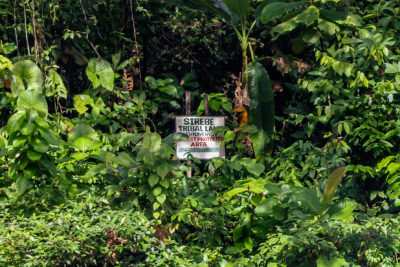
An indication marks the boundary of protected Sirebe land.
Douglas Junior Pikacha / Nakau
Ikavy Pitatamae opens his telephone to document his sighting of the hornbills in a biodiversity app, then uploads {a photograph} of a fallen tree into one other app used for monitoring modifications in forest circumstances. The calculations underwriting the worth of this undertaking on the worldwide carbon market started with painstaking surveys the rangers carried out over six months, previous to its verification in 2021. They measured every little thing rising and dwelling inside a listing of survey websites 80 toes in diameter. Rangers repeat the surveys each 10 years and yearly conduct transect surveys that document each change and each animal noticed. Rangers routinely patrol boundaries, checking for incursions. Reviews are verified by impartial auditors and towards satellite tv for pc imagery.
Pushing by means of the dense tangle of vines and shrubs to the bottom of a large brown terminalia tree, Ikavy Pitatamae demonstrates how baseline knowledge are collected. He passes a measuring tape across the tree’s girth, then goals a laser beam as much as the place the trunk — possible 200 years within the making — branches out. Loggers would covet this specimen. Pitatamae’s knowledge factors confirm that this forest accommodates harvestable and marketable timber that might possible be felled had been it not protected — thus demonstrating a core carbon market requirement that the timber wouldn’t in any other case exist with out this undertaking. The information are additionally mandatory for tallying the forest’s carbon retailer, or stock. The magnificent cover, the forest’s messy center story of younger timber and saplings, and the biomass of its understory would all be simply collateral injury to loggers coming for this tree’s trunk. However left standing, they’re a part of the complicated calculus paying the rangers’ wages and supporting others within the tribal communities and villages.
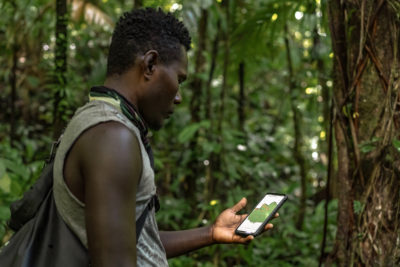
Ranger Elijah Qalolilio Junior makes use of a smartphone map app as he screens the forest.
Douglas Junior Pikacha / Nakau
Since 2022, the Sirebe have obtained 5 quarterly funds for his or her forest undertaking. The cash ought to hold flowing till 2045, when the contract comes up for renewal. The funds are made by Nakau, the Pacific-wide, rights-based, nonprofit operator that coordinates the Babatana undertaking and works in collaboration with NRDF. Comparable funds are within the pipeline for neighboring tribes as their tasks are verified and added to the Babatana undertaking portfolio.
The Babatana undertaking is owned by the tribes, who additionally retain their carbon rights. This construction, it’s hoped, will assist the undertaking overcome a number of the criticisms geared toward different carbon-trading schemes internationally, together with that they perpetuate extractive colonial dynamics of their dealings with forest folks and have led to episodes of battle and violent dispossession. Many consultants have been damning of tasks’ lack of session with native folks and transparency, and there’s substantial proof that some tasks are pure greenwashing.
Amongst these critics is the Australian sociologist Kristen Lyons, a sustainability and improvement knowledgeable who spent years observing tasks in East Africa that did not ship what they promised. Together with her fellow College of Queensland sociologist Peter Walters, she’s taken the place that carbon offsets not solely allow huge industrial polluters to proceed emitting, in addition they recruit conventional landowners “as unwitting accomplices to this environmental procrastination,” as the students wrote in a 2021 ebook chapter.
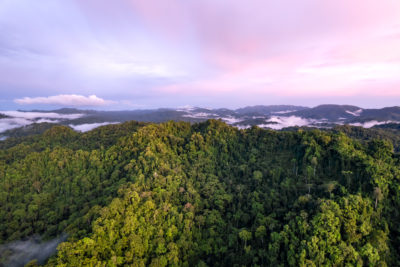
The Sirebe forest at nightfall.
Douglas Junior Pikacha / Nakau
Nonetheless, after a number of years of monitoring the Solomons undertaking, Lyons and Walters argue that it’s a regionally vital instance of greatest follow for carbon tasks in a small nation. “I’ve been, traditionally, extremely important of carbon offset tasks,” Lyons says. However after making use of an environmental justice lens to her research of the Babatana undertaking, she notes, “My view has shifted.”
Lyons observes that whereas forest homeowners ought to, in principle, be highly effective stakeholders in a worldwide market value lots of of billions of {dollars}, in actuality they’re typically removed from equal companions. Indigenous folks might wrestle with impenetrable jargon from the unsuitable facet of the digital divide, typically of their third or fourth language. However on Choiseul Island, native engagement is powerful. Lyons says she has seen communities utilizing cash obtained from the offsets for applications that mirror their very own priorities, together with agricultural, sanitation, and schooling tasks, which can present lasting worth even when the carbon caper goes stomach up tomorrow.
“We have to attend to human rights, notably Indigenous rights, as we’re looking for to take care of the local weather disaster,” says Lyons. “And so, if native communities — notably Indigenous communities — are saying it is a pathway [they] wish to discover, I believe it will be a horrible factor if there was not the help [for it].”

Rangers Ismael Norokesa (left) and Mosses Zoleveke (proper).
Douglas Junior Pikacha / Nakau
Their work within the forest accomplished, the Pitatamae brothers and Bosma climb aboard their motorized canoe and slowly navigate down the shallows of the Kolombangara River, previous crocodiles, kingfishers, and flood-eroded banks. Huge rains used to come back as soon as a season however now happen 5 – 6 occasions in succession, says Linford Pitatamae. The injury is much worse in logged areas, the place floods wash out crops and sediment contaminates clear water and coastal fishing grounds.
This river flows by means of 330 sq. miles of lowland, riparian, and montane forests that include a number of the richest biodiversity remaining in Solomon Islands. On the northern financial institution lies the 18-square-mile protected space of the Padezaka tribe, whose carbon undertaking is in its final phases of verification. “This space is closely threatened by logging,” Bosma says. “It’s been fairly an achievement that they may get it [protected] in time.” Some neighboring tribes have let loggers in, and muck from the churned panorama, logging camps, and roads is spilling into the water catchment.
Leaving the river, the canoe picks up velocity for the final bumpy leg residence, over open ocean, and at last pulls up on the sand at Sasamungga, on the midpoint of Choiseul’s south coast. The sprawling village is residence to round 1,000 folks from the Sirebe, Siporae, Vuri, Padezaka, Garasa, and Lukulombere tribes, whose ancestral forests are inland, within the river nation we’ve simply left. Like many Pacific forest folks, they’ve over the many years drifted to hubs like Sasamungga to entry schooling, markets, well being providers, transportation, and jobs.
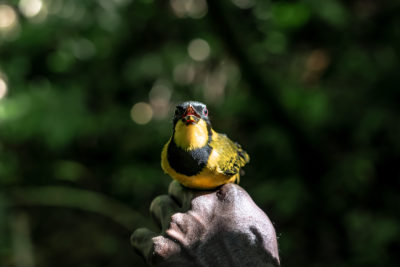
A male oriole whistler on a forest ranger’s hand.
Douglas Junior Pikacha / Nakau
Solely about 10 p.c of the small however rising Sirebe inhabitants have paid employment outdoors the village, Linford Pitatamae says, so a lot of the neighborhood have had a hand-to-mouth village life, counting on what they may earn from fishing and agriculture. Now, their carbon undertaking sells round 17,423 credit a 12 months on the worldwide market below a deal extending 30 years. It takes in roughly $263,350 a 12 months, of which 20 p.c goes to NRDF, 20 p.c to Nakau, the undertaking coordinator, and 60 p.c to the 27 households of the undertaking homeowners. In a subsistence financial system in one of many poorest nations within the Pacific, that’s life-changing earnings.
One man put his family’s share into a brand new outboard motor and insulated containers to retailer fish on the market. His neighbor invested in tools for a mechanical workshop. Households have put in photo voltaic panels and bogs with septic tanks, upgraded their houses, and plumbed water faucets that ship rainwater collected in new tanks.
5 p.c of funds go into the Sirebe girls’s financial savings membership — $2,360 each quarter. Karah Qalo, who based the membership, says the 33 members use it to pay their kids’s faculty charges, purchase supplies for his or her meals gardens, spend money on bakery tasks and bee retaining, and run their telephones. Their scenario is radically completely different from that of girls from forest communities which were logged. Native customized largely holds that solely males have authority over the land, whereas girls have solely the correct to make use of the land — together with for gardening, firewood, or water assortment. When male leaders enable loggers in, says Qalo, they get money, however the girls lose every little thing. “The water might be polluted, air air pollution, every little thing won’t be good due to the air pollution of the machines.”
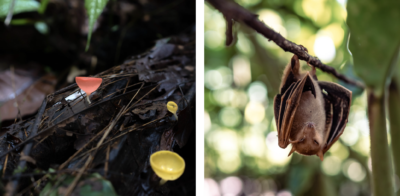
Cup fungus (left) and a Woodford’s fruit bat (proper) within the Sirebe forest.
Douglas Junior Pikacha / Nakau
Carbon marketeers often describe the carbon that’s sequestered and traded because the core good thing about their enterprise and any optimistic social or financial outcomes for native folks as co-benefits. However Nakau chief working officer Alex McClean argues that from the attitude of forest folks, “the carbon is near irrelevant. What issues to them are enhancements to their life and livelihoods.” He likes to show the measure of integrity on its head, so issues like jobs for rangers and funds that empower girls grow to be core advantages, with carbon discount the icing on the cake.
However carbon market pioneer Mark Trexler, whereas not commenting particularly on the Nakau mannequin, questions this strategy, and the applying of an environmental justice lens to carbon tasks. “‘Excessive integrity’ within the offset area has to check with local weather change mitigation advantages,” he says, to not co-benefits together with forest neighborhood impacts. “If voluntary markets grow to be seen primarily as a technique to ship cash to impacted communities, we’re speaking about carbon contributions, not offsets.”
Nakau CEO Robbie Henderson says demand for the Babatana undertaking is powerful and that “we might positively promote our credit a number of occasions over in the meanwhile.” Some patrons don’t use these credit to offset something, he says, however reasonably to exhibit their environmental dedication. Some agree to not declare carbon neutrality; some offset residual emissions. An exclusion record prohibits the sale of credit to help any fossil gas enlargement.
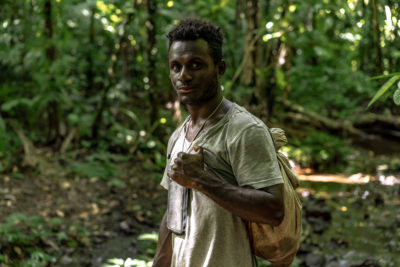
Ranger Clinton Gatavae.
Douglas Junior Pikacha / Nakau
Linford Pitatamae recollects loads of skepticism when he and Wilko Bosma began speaking to the neighborhood concerning the loopy notion of promoting their forest, however not their timber. “At first, we didn’t suppose this was an actual undertaking,” Pitatamae says. “The neighborhood didn’t actually perceive.” It took years of “steady engagement, coaching, [and raising] consciousness” to win help, he says, then extra years to work by means of the hurdles of verification and certification to get up to now. Now he’s listening to from landowners throughout the island, and the nation, who’re hungry to study extra.
“We consider we have now to respect the atmosphere — that may carry us a great future,” says Linford Pitatamae. “We nonetheless have our timber [and] good consuming water sources. Our birds are nonetheless there. Our sacred locations are nonetheless there.” He spends lengthy hours most days locked away from the forest he loves, grinding by means of the paperwork and complexities of retaining this enterprise going. However he’s not complaining. “That is the correct path for rural Solomons to comply with,” he says.
Correction, April 22, 2024: An earlier model of this text incorrectly spelled the names of two Solomon Islands tribes. They’re the Vuri, not the Viru, and the Garasa, not the Garesa.
